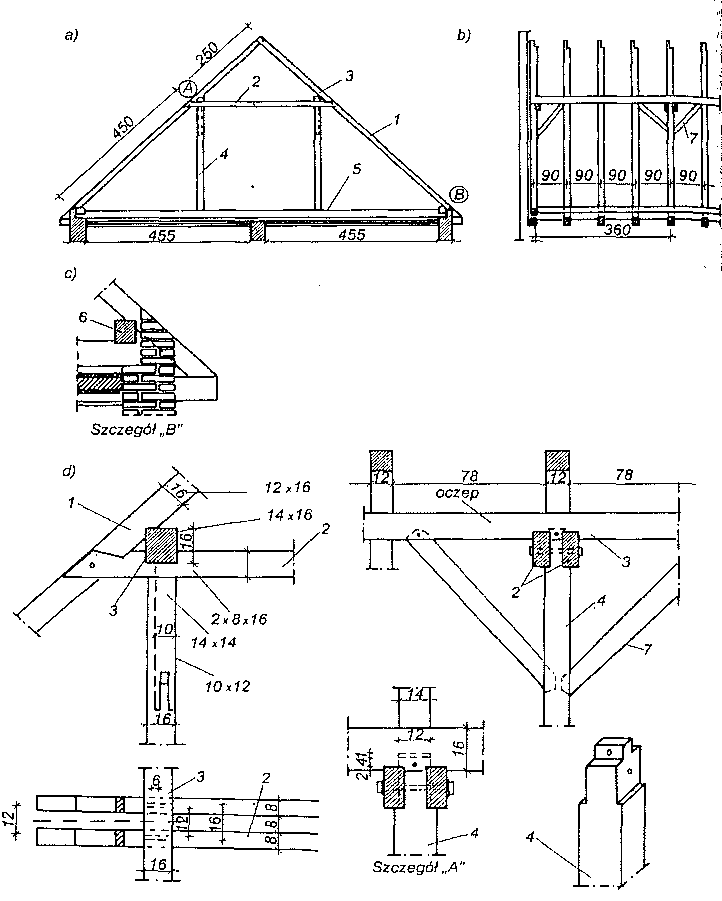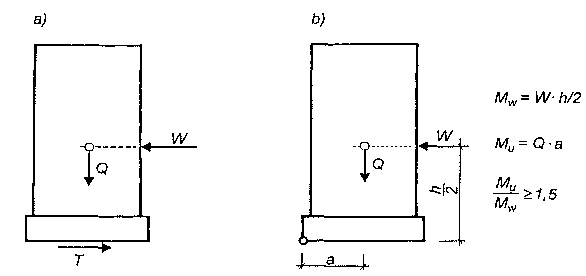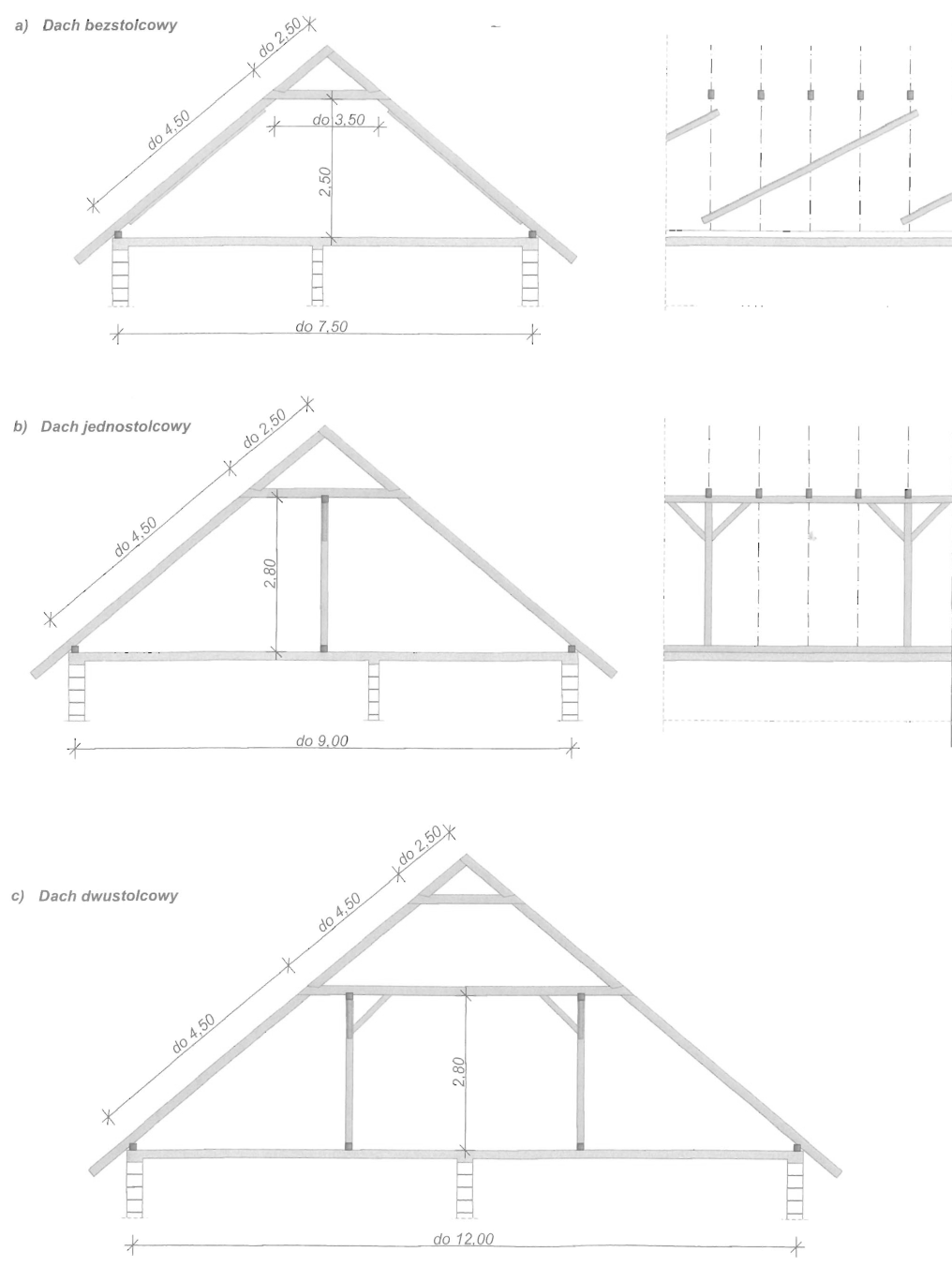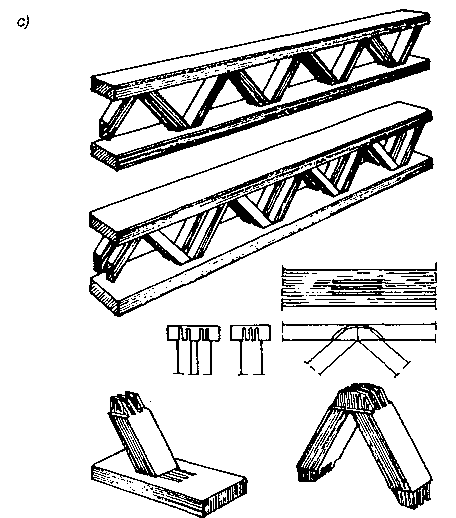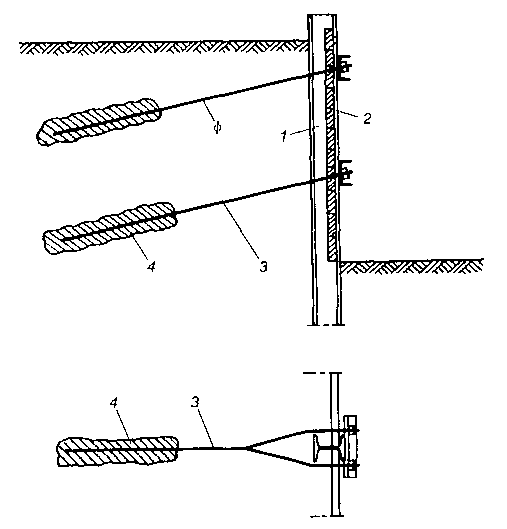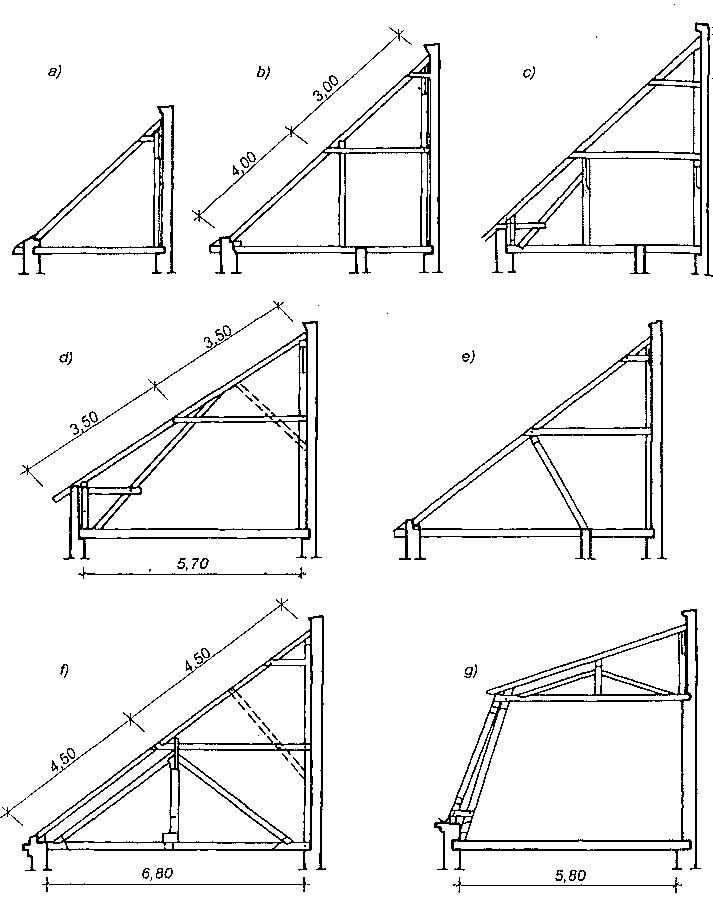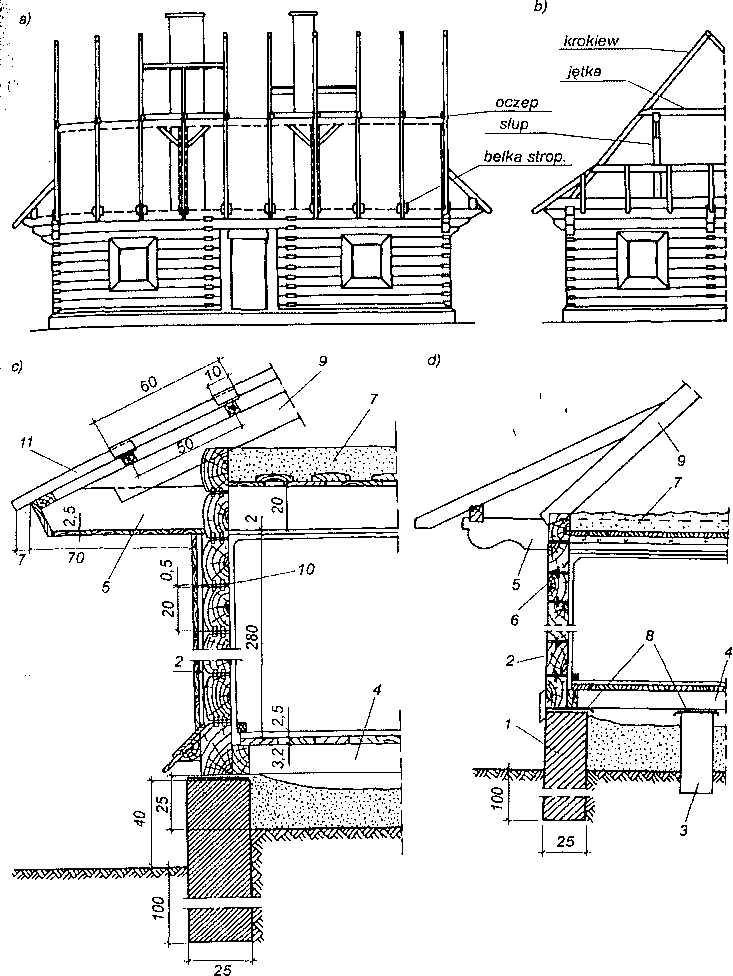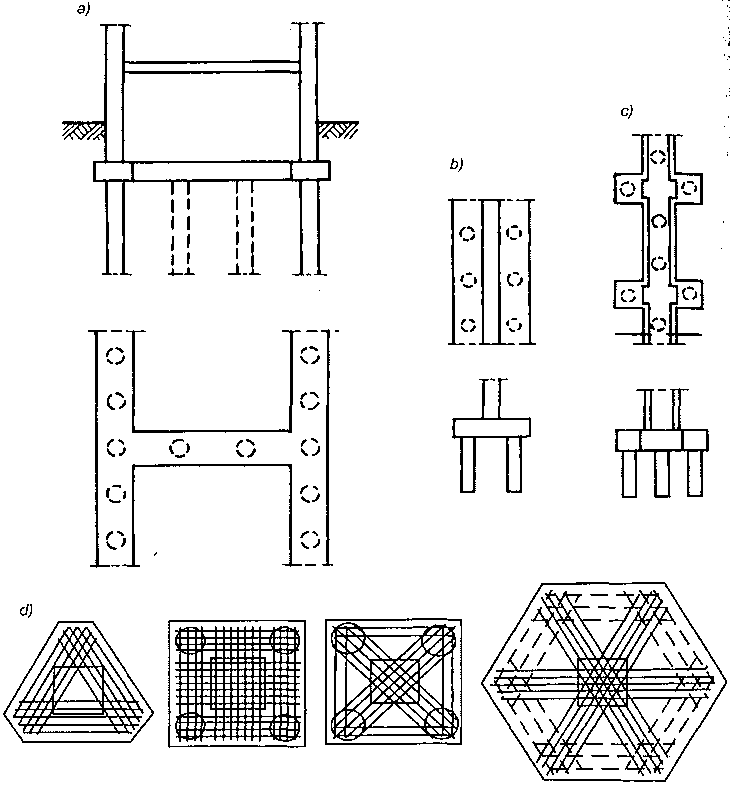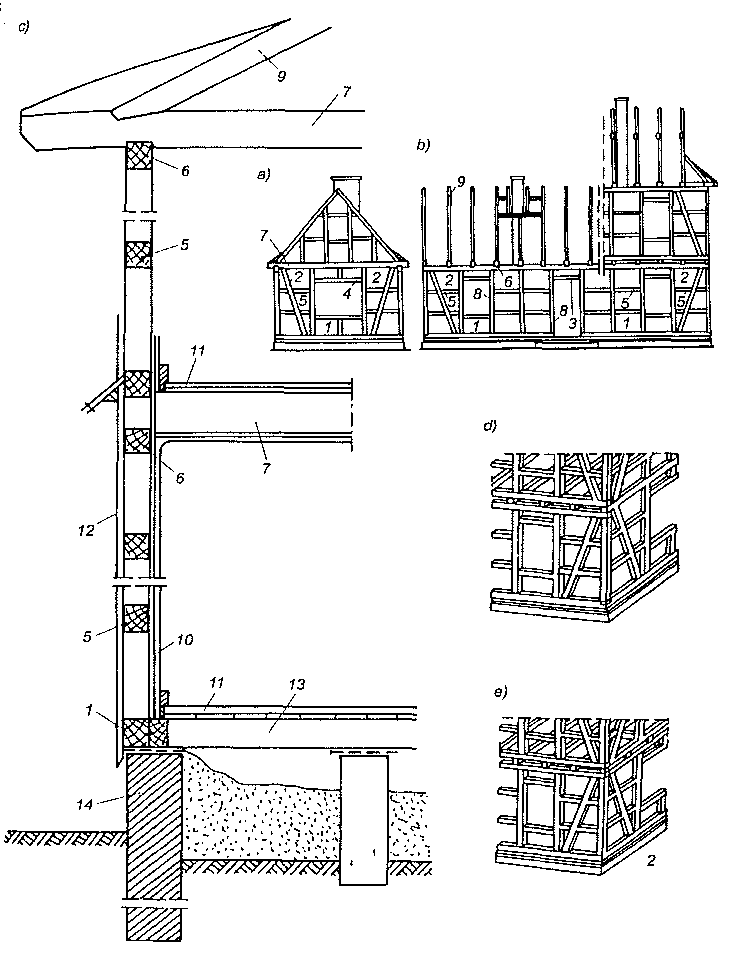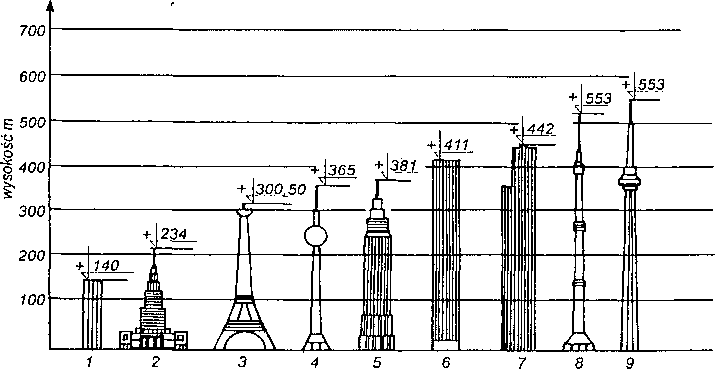Ramy.
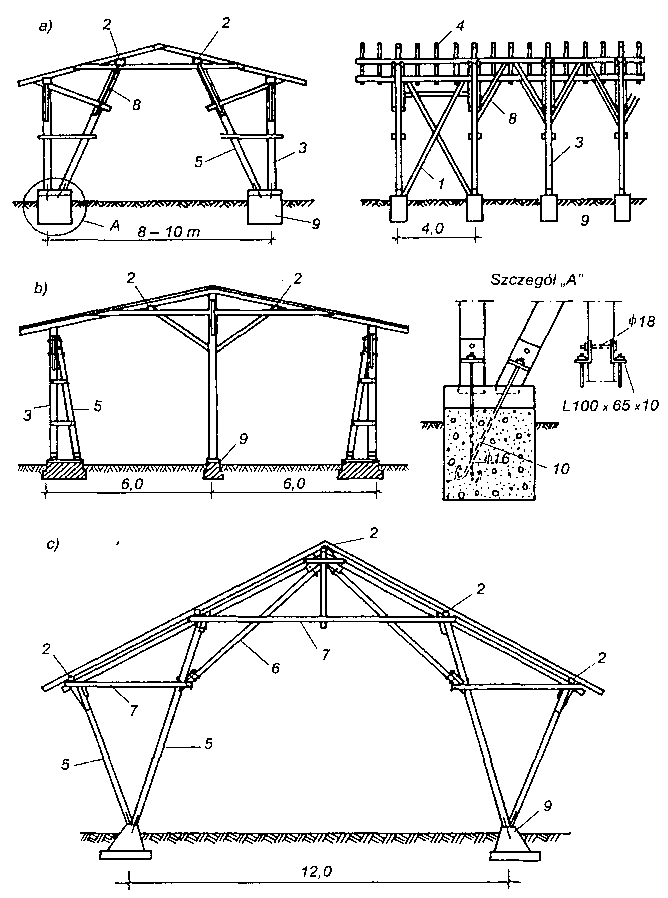 Ramy w rozwiązaniu ciesielskim: a) jednonawowe z pionowymi ścianami zewnętrznymi, b) dwunawowe, c) jednonawowa rozporowo-zastrzałowa; 1 — stężenia podłużne hali, 2 -płatew, 3 — słup, 4 — krokiew, 5 — zastrzały (słupy nachylone), 6 — rozpory, 7 — kleszcze, 8 — miecze, 9 — fundament, 10 — kotwie.
Ramy w rozwiązaniu ciesielskim: a) jednonawowe z pionowymi ścianami zewnętrznymi, b) dwunawowe, c) jednonawowa rozporowo-zastrzałowa; 1 — stężenia podłużne hali, 2 -płatew, 3 — słup, 4 — krokiew, 5 — zastrzały (słupy nachylone), 6 — rozpory, 7 — kleszcze, 8 — miecze, 9 — fundament, 10 — kotwie.
Na rysunku przedstawiono ustroje konstrukcyjne, które stosuje się -w budynkach parterowych typu halowego przeznaczonych na magazyny, hale produkcyjne, stodoły, wiaty itp.
Konstrukcja wiązara powiązana ze słupami tworzy ustrój ramowy, który przejmuje obciążenia pionowe oraz poziome i przekazuje je przez fundament na grunt. W zależności od sposobu kształtowania sztywności przestrzennej konstrukcji budynku, słupy mogą być ustawione pionowo lub z odchyleniem od pionu. Przy słupach podwójnych i dodatkowo odchylonych od pionu (rys.a, b, c) uzyskuje się większą sztywność ustroju w jego płaszczyźnie niż przy słupach pionowych. Rozpiętość ram ciesielskich wynosi 8,0-15,0 m.
W kierunku podłużnym budynku ramy ustawiane są w odstępach 3,0-5,0 m. Nad słupami układane są płatwie, które mieczami łączą się ze słupami lub zastrzałami i w ten sposób usztywniają ramy i ich płaszczyzny, tj. w kierunku podłużnym. Sztywność konstrukcji w kierunku podłużnym budynku zapewniają stężenia pionowe (zastrzały), które umieszcza się w skrajnych polach między słupami; jeśli budynek jest długi, to również i w polach pośrednich.
Ramy wykonuje się przeważnie z krawędziaków, można również użyć połowizn i okrąglaków. Na rysunku przedstawiono szczegóły konstrukcyjne ramy o rozpiętości 12,0 m pokazanej na rys. c.
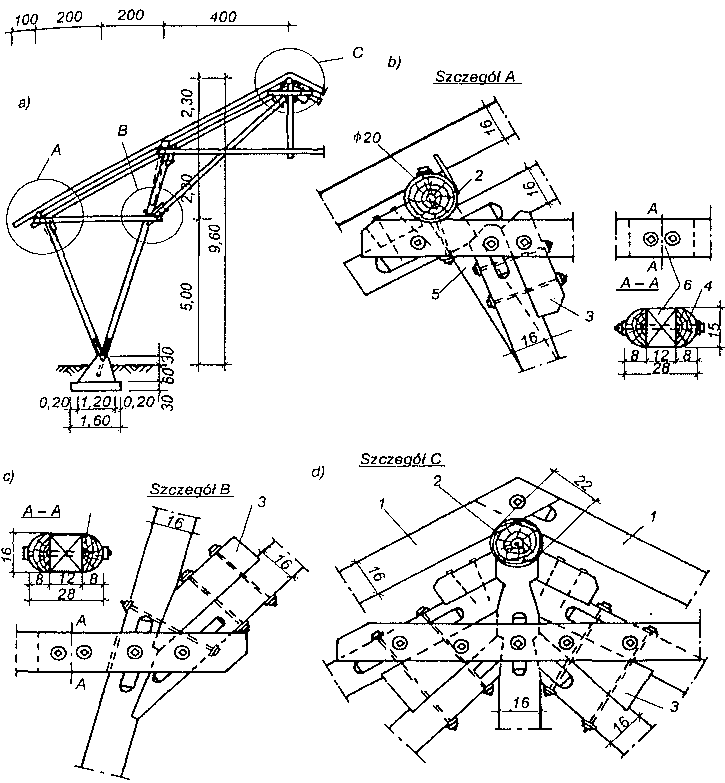 Szczegóły konstrukcyjne ramy kratowej o rozpiętości 12,0 m: a) widok, b), c), d) szczegóły; 1 — krokwie, 2 — płatwie, 3 — klocki, 4 — połowizna, 5 — miecz, 6 — przewiązka.
Szczegóły konstrukcyjne ramy kratowej o rozpiętości 12,0 m: a) widok, b), c), d) szczegóły; 1 — krokwie, 2 — płatwie, 3 — klocki, 4 — połowizna, 5 — miecz, 6 — przewiązka.
Ściany zewnętrzne budynków mogą być wykonane jako słupowo-ryglowe z wypełnieniem cegłą (mur pruski) lub z desek i izolacją cieplną.
